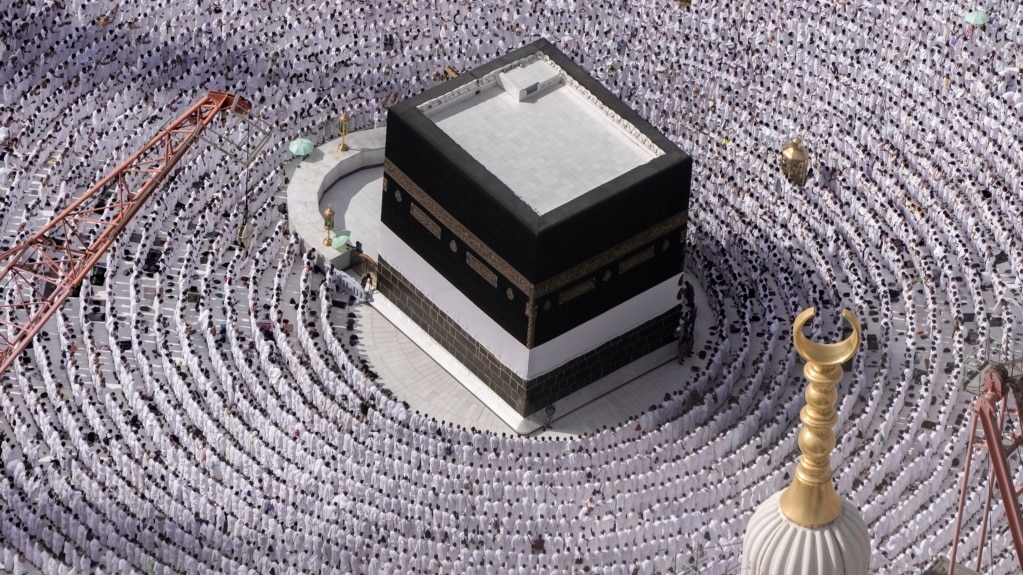Once a year, millions of Muslims from all over the world travel to Saudi Arabia, to complete an important religious duty called Hajj. The travelers gather in the city of Mecca, carrying out holy acts over several days.
Hajj is one of the five pillars, or bases, of Islamic belief.
Here is a look at the religious event and its meaning to Muslims:
What is Hajj?
Every Muslim who is financially and physically able is expected to complete at least one Hajj. Hajj is one of the Five Pillars of Islam. The others are declaration of belief, daily prayers, giving to those in need, and fasting. These acts are required.
When is Hajj?
The Hajj takes place once a year during the Islamic lunar month of Dhul-Hijja. It is the 12th and final month of the Islamic year. The Hajj begins on June 14 this year and ends on June 19.
What is the meaning of Hajj to Muslims?
Performing Hajj meets a religious requirement for Muslims. The pilgrims are to seek God’s forgiveness for their wrongdoings. They believe the act brings them closer to God.
Many pilgrims bring with them prayer requests from family and friends that they would like to be said for them.
Some Muslims spend years saving money and making preparations to make the pilgrimage. And other barriers can get in the way.
In 2019, almost 2.5 million Muslims traveled to Mecca for Hajj. But the next year saw worldwide pandemic restrictions. Saudi officials restricted the event in 2020 to Muslims who lived in the country. Last year’s Hajj was the first to be held without COVID-19 restrictions since 2020. Close to 1.9 million people took part.
What are some of the religious acts that pilgrims perform?
Pilgrims declare the will to perform Hajj and they enter a state of “ihram.” Rules of ihram include the wearing of special clothes by men. The aim is to prepare oneself to be humble and a follower of God.
A spiritual high point of Hajj for many is to stand on the plain of Arafat. Pilgrims pray at the site, praising God and asking for God’s forgiveness.
Other religious acts include performing “tawaf” or circling the Kaaba structure in Mecca seven times.
The Kaaba is a structure that represents the house of God. Muslims pray toward the Kaaba wherever they are in the world.
Pilgrims also follow the path of Hagar, or Hajar. She is the wife of the Prophet Ibrahim, or Abraham to Jews and Christians. Muslims believe she ran between two hills seven times searching for water for her son.
Among other religious acts, pilgrims throw small stones at structures that represent evil.
What is Eid al-Adha?
Eid al-Adha, or the “Feast of Sacrifice,” is a holiday that begins on the 10th day of Dhul-Hijja, during Hajj.
It is celebrated by Muslims around the world. It marks Prophet Ibrahim’s demonstration of religious belief by offering his son’s life to honor God. During the holiday, Muslims kill animals like sheep or cattle and give some meat to the poor.
I’m Gena Bennett.

